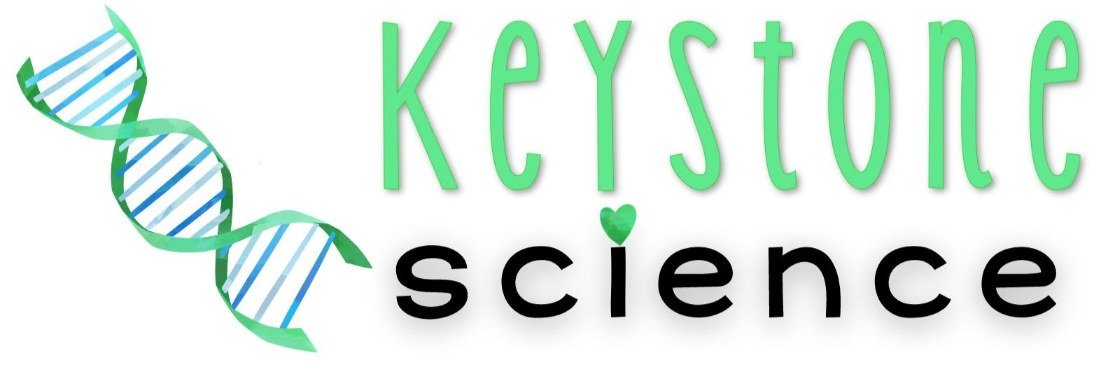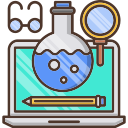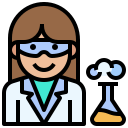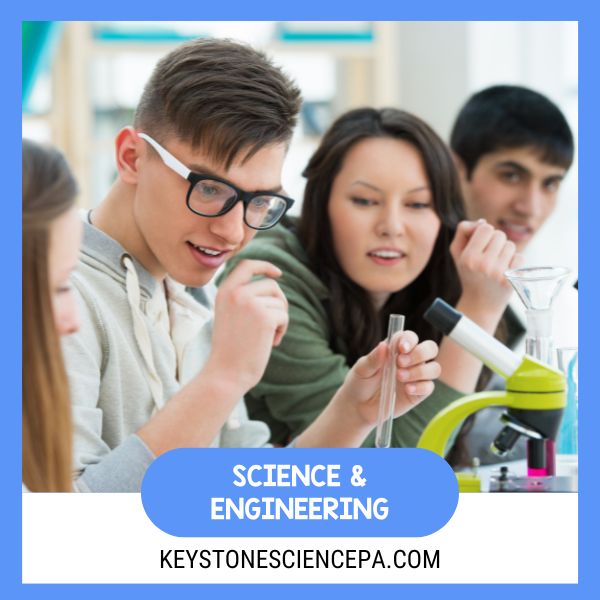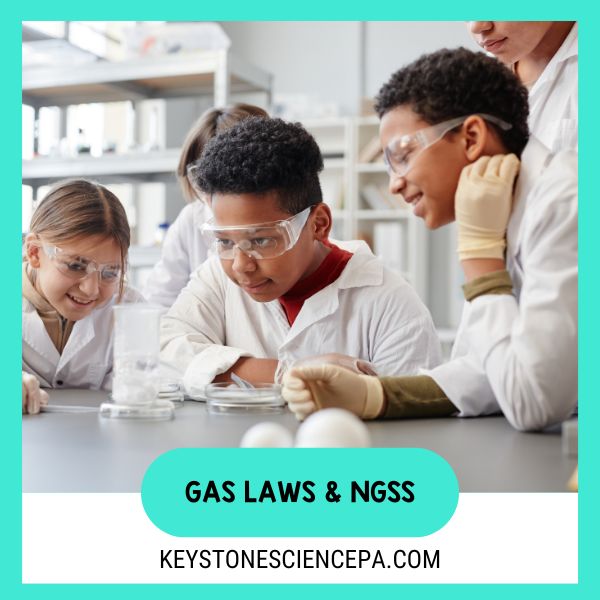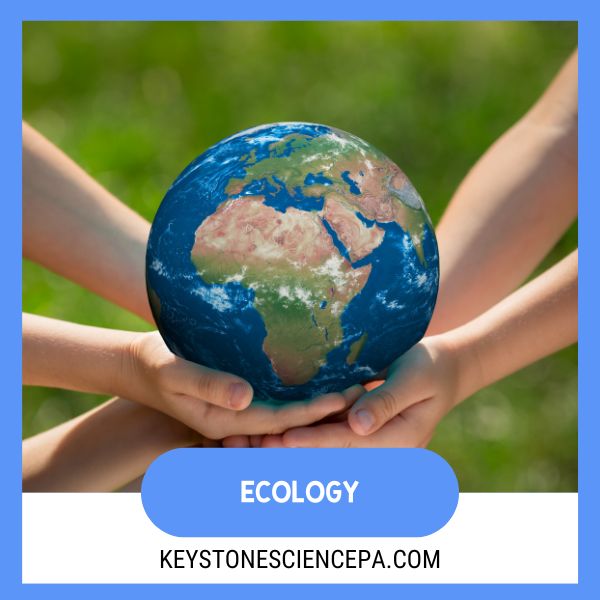Science and Engineering Practices (SEPs) are these incredible tools that teach our students about how to tie actual methods used by scientists and engineers! Science is so much more than memorizing facts, discoveries or reading up on what other scientists have achieved. SEP’s allow for more hands-on, discussion based activities which, in the end, will help students become more engaged because of the real-world connections being made! Personalizing lessons are key to having students get excited about what you’re teaching and the most out of your lesson.
Let’s dive into SEPs and undercover their importance in science education and their role in creating a more curiosity driven classroom. Here we will review the 8 SEP’s and I’ll also show you how you can start incorporating these techniques with simple shifts in your existing teaching methods, strategies for encouraging student engagement and ready-to-use lessons. Ok, here we go🚀:
Exploring the Different SEPs

1️⃣First up- Asking questions: While this practice might be the most basic, it can also be the most challenging! I’m sure we’ve all experienced crickets when asking our students their thoughts on follow up or analysis questions. Rather than keeping this element to the end of a lesson, make it common practice to integrate this in pre-lab activities, small group discussions & 1:1 check-ins.
2️⃣Developing models: Having a physical model or illustration is a great tool to help simplify a more complex topic. Another way to integrate models is to use this as a summative activity where students can design their own model to help interpret their level of understanding. The DNA structure resource is a great virtual or print-and-go option to practice modeling!

3️⃣Planning and carrying out investigations: This is the chance for students to get hands-on experience and truly explore science, make predictions, carry-out observations and collect data!
4️⃣Analyzing and interpreting data: With all the data collected, here is where they will have the opportunity to interpret what the data all means! For students that might struggle with identifying what the numbers mean, having them observe trends can be just as valuable.
5️⃣Using mathematics and computational thinking: Here, math and computational thinking might be most common in Physics, but we actually can make use of this in Biology too! Remember, all of that data collected in SEP 4 & SEP 5? Well, these numbers can be used to develop conclusions and later present these conclusions through a model or graph. Finally, we’re starting to put the science puzzle pieces together!
6️⃣Constructing explanations & designing solutions: Lessons must incorporate real-world applications for students to have buy-in. Depending on your classes, offer an opportunity for them to get into small groups or work independently to weave in their findings, prior knowledge and apply them to solve real-world problems.
7️⃣Engaging in argument from evidence: This is what I like to call the “science showdown”. Students will act like a true scientist and will have the opportunity to back up their ideas with evidence, present their arguments and if you’re feeling up to it, mediate a friendly debate! Vanishing of the Bees is a project based learning activity where over an extended period of time, students gain knowledge, investigative skills and through engagement, will develop a solution-based conclusion to an existing problem or challenge.

8️⃣Obtaining, evaluating, & communicating information: Depending on the lab used to work through SEP’s, it can feel time consuming to go back and revisit the objective of the lesson. However, there is so much value in blocking out class time to practice filtering through the details and summarizing. findings using a clear and concise statement, conclusion or meaningful project to share what they’ve found. A Bioethics Debate is always a GREAT way to not just encourage classroom engagement, but you might even find yourself reminding your students that you need to move on! Passion in topics and supportive research is as applicable to the real-world as it can get!

The 8 SEPs are not just methods to cover areas of science; these are the 8 pieces needed to make connections and practice a new approach to learning and building on inquiry skills, just like a real scientist or engineer would.
Remember, the goal isn’t to just memorize facts or pass standardized tests. The goal is to use an approach that allows for students to feel comfortable in asking questions, making mistakes, sharing their predictions and carrying out the scientific process through critical thinking. Essentially, you are setting them up to be successful not just in your classroom, but to become great problem solvers who can apply these skills to any problem they might face.
Level-Up Your Lessons to Embrace the Power of SEPs
Let’s take a minute to think about your existing lessons. If you’re someone who has activities that you feel are effective and it’s always a hit with students, then please continue to use them! Only you know what works for your class. The purpose and power of SEP’s is that they can be applied to any lessons you have on hand! Don’t feel pressured to start from scratch- instead, think of SEP’s as ways to level up activities and labs to help align with NGSS standards and provide a more authentic scientific experience.
I’m going to paint you a little picture. Before using SEP’s, my lessons were structured in the traditional way of presenting the objective, teaching the unit, students taking notes, we practiced through an activity, summarized with a lab, answered analysis questions and moved on to the next unit.
It all felt very robotic and the only engagement practiced is when I would initiate through questions, 1:1 check-ins or by giving my students a direct engagement instruction.
Now, having added SEP’s into my daily lessons, I’ve been able to find a more effective way of presenting content and allowing my students to explore on their own instead of being talked to.
Here are my go-to strategies I use to modify specific lessons to include SEP’s that you can start to use today! 👇
Flipped Classroom: Here, students start the inquiry process on their own after observing a phenomena. Notes of their observations are taken and through their natural curiosity, the scientific process starts! Guide them through the investigative steps, offer questions regarding prior knowledge and slowly add in unit notes. When keeping summative or analysis questions to the end of a lesson, rather than including them in the introductory worksheet, you allow collaboration and discussion to walk them to the conclusion.
Inquiry-Based Labs: With a bit of an introduction, have students do the data collection before presenting the content. Instead, the content will act as the missing links to the investigative process and classes can make conclusions and connections after content delivery.
CER (Claim-Evidence-Reasoning): CER’s are designed so that prior knowledge can be used along with supportive content, to clearly connect a claim and the evidence. This connection is what makes up the reasoning element of CER’s.
Skills not content: By putting emphasis on applying the existing skillset and grading more on SEP’s and CCC’s, this will create an environment that welcomes the investigative process rather than memorization.
Collaborative work: When time provides, always incorporate group work, discussion, and collaboration! That is what science is! Science is a pillar where ideas are encouraged, practice is expected and mistakes are learning opportunities. Collaboration is key.
Allow for struggle: As much as honors students want to find the right answer, it’s important to remind them that there isn’t always a “right” answer in science. This is a new experience for students, but they will adapt!
Encouraging Student Engagement in SEPs
Going back to a Flipped Classroom strategy, it’s not only a great way to bring in various SEP’s, but it also encourages students to become more actively involved by promoting a deeper understanding and creating more ownership of the scientific process. The incredible effect of incorporating SEP’s is that each of the practices will naturally highlight collaboration, open-ended exploration and these conversations can then pivot to real-world contexts and problem-solving skills! So, if you are someone new to NGSS or if SEP’s seem overwhelming, the practices will literally flow on their own. All you will need to do is initiate and guide your students. Essentially, students are building the framework of the modern-day scientist or engineer.
Here are two example lessons to help encourage student engagement with SEP’s, but more specifically a full 3D Learning model 👇
Example 1: ECOLOGY- Designing investigations with a Pollinator Gardens
In Ecology, the Pollinator Garden project is students will be allowed to explore a pollinator that is important to the ecosystem where they live and design a garden to support their life cycle. Now, let’s look at how 3D learning can be weaved into the lesson.

Cross-Cutting Concepts (CCC) can be used when applying Systems and System Models. Students can explore the interactions between pollinators, native plants and ecosystems as well as understand how they form a complex system.
Disciplinary Core Ideas (DCI) is brought in through Ecosystems: Interactions, Energy, and Dynamics. Students can investigate the relationships between pollinators, native plants and the ecosystem dynamics while focusing on energy flow and the transfer of matter throughout the ecosystem.
Example 2: Analyzing and Interpreting Data of the Behavior of Gases
For states of matter or intermolecular forces in Chemistry, the Gas Laws PowerPoint & guided notes as well as the Gas Laws problem packet is an excellent activity to introduce the properties, illustrate understanding and practice interpreting data.


CCC will focus on Patterns: Through the suggested lesson and review packet, students can analyze data related gas laws to identify patterns and trends and will practice drawing conclusions about the relationships between variables.
The DCI will highlight the Interdependent Relationships in Ecosystems: Whether through independent practice or small groups, students can examine data, discuss trends and use this to understand how gas laws govern the behavior of gasses.
The goal is not just to encourage student engagement; this is actually secondary. It is our job as educators to create a classroom environment where our students feel supported in sharing their ideas, making mistakes and know that their ideas are valuable in the learning process. If you can create an inclusive space, then trust and engagement can follow right after!
Connecting SEPs Across Scientific Disciplines
At this point, you should feel much more prepared about how to tie in SEP’s, encourage student engagement and hopefully understand the gems that these practices can add to your existing lessons! But, the deeper value is when we demonstrate how the content in our disciple spans across other scientific disciplines. Remember, you may have a student whose passion falls under physics. Well, if said student is currently in a biology class, take the opportunity when appropriate to explain how radiologists and healthcare professionals may practice areas of biology and physics in their career. Doing this will grab the attention of those who see why your class is essential and applicable to their interests!
Here are a few specific examples to connecting SEPs across scientific disciplines and 👇
Example 1: Developing Models
An excellent ready-to-use activity is the DNA Structure Inquiry Activity!
The lesson ties in CCC’s through the use of patterns and DCI’s through molecular biology, understanding structure, function and processes.

Ok, we can see how the lesson can bring in the other dimensions of learning, but what about using the DNA Structure Inquiry Activity to connect across varying scientific disciplines?
The Genetic and DNA units are pure gold when it comes to finding ways to apply the content to other disciplines. For example, here you can easily integrate chemistry as the basis of DNA structure and identify hydrogen bonding between nucleotides. Physiology to explain how genes affect muscular function and engineering or physics to demonstrate the use of electron microscopes! It’s our job to not just make the content understandable, but applicable too. If students can see how they interact with the topic in their daily life, then you can automatically highlight the value in it.
Example 2: Using Mathematics and Computational Thinking
Another activity that can be used as a partner review or independent practice is the Chemistry Real Life Stoichiometry Problems

The lesson ties in the dimension, CCC’s through Energy and Matter and DCI’s through Physical science by students needing to use mathematical representations to support the claim that atoms, and therefore mass, are conserved during a chemical reaction.
Another DCI which the Chemistry Real LIfe Stoichiometry Problems activity covers is under Life Science. As a higher level of application, students can be asked to construct and revise an explanation based on evidence for the cycling of matter and flow of energy in aerobic and anaerobic conditions.
Conclusion
It can feel overwhelming to look at SEP’s as another set of standards we’re expected to adjust to, but just as you’ve taken the time to develop your curriculum, it’s important to use the same approach here!
SEP’s are there to enhance student engagement. If you notice there are some elements in your labs or activities that are lacking, select which of the 8 practices would be most fitting and use it! It’s that simple.
Instructional design has evolved so much over the years and as science educators, if we can understand the importance of evolution in a species, then why not apply the same thinking to our profession.
Gone are the days of standing at the front of the room with students being lectured to, presented instructions, completing a worksheet and on to the next. Now, we’ve discovered value in letting students get in the driver’s seat and lead their own curiosity. Our job is to create a setting where conversations and mistakes are welcomed, offer support along the way, but essentially, let curiosity build their problem-solving skills.
Simply put, engagement enforces student learning.
Set up a plan to start merging SEP’s into your favorite lessons and watch how these strategies naturally create collaboration and student engagement.
💡For more information on NGSS, visit https://www.nextgenscience.org
💡As a quick refresher on 3D learning and steps on how to apply NGSS, visit Keystone Science Blog at https://keystonesciencepa.com/blogs/teachertips
💡Feel free to explore Keystone Science for ready-to-use NGSS aligned notes and activities,
I would love to hear your feedback, questions and success stories of how these SEP’s have fueled your lessons! Share in the comments or email me directly at [email protected]
